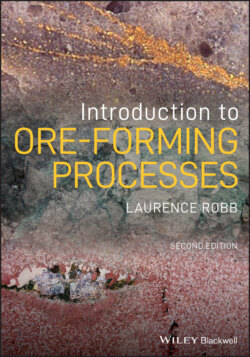Читать книгу Introduction to Ore-Forming Processes - Laurence Robb - Страница 12
Introduction and Aims
ОглавлениеWith a global population in 2019 of close to eight billion people, and this figure set to increase to some ten billion by 2050, it is apparent that the world's economies are under growing pressure to meet the demands of an increasingly materialistic lifestyle. The unprecedented growth of human population over the past century has resulted in a dramatic increase in demand for, and production of, natural resources – it is therefore evident that understanding the nature, origin, and distribution of the world's mineral deposits remains a vital and strategic topic. The discipline of “economic geology,” which covers all aspects pertaining to the description and understanding of mineral resources, is, therefore, one which traditionally has been, and should remain, a core component of the university earth science curriculum. It is also the discipline that underpins the training of professional earth scientists working in the minerals and related industries of the world. Unfortunately, a tendency at many universities in the recent past has been to treat economic geology as a vocational topic, and to provide instruction only to those individuals who wished to specialize in the discipline or to follow a career in the minerals industry. There has been a trend, at least in many parts of the world, to sideline economic geology both as a taught discipline and a research topic.
Developments in the early twenty‐first century have indicated how problematic institutional and governmental neglect can be when the security of supply of strategic metals is brought into question. Global demands to reduce greenhouse gas emissions, and to provide a framework for the responsible and sustainable supply of natural resources, have resulted in the realization that all earth scientists need to understand the resource cycle in order to properly advise the public at large, and to manage future programs aimed at the responsible custodianship of the world's finite resources. The conceptual development of earth systems science, a feature of the latter years of the twentieth century, has led to changes in the way in which the earth sciences are taught. A more holistic, process‐orientated approach has led to a much wider appreciation of the Earth as a complex, interrelated system. The understanding of feedback mechanisms has created an awareness that the solid Earth, its oceans and atmosphere, and the organic life forms that occupy niches above, at and below its surface, are intimately connected and can only be understood properly in terms of an interplay of processes. Examples include the links between global tectonics and climate patterns, and also between the evolution of unicellular organisms and the formation of certain types of ore deposits. In this context the teaching of many of the traditional geological disciplines assumes new relevance and the challenge to successfully teaching earth system science is how best to integrate the wide range of topics into a curriculum that provides understanding of the entity. Understanding the processes involved in the formation of the enormously diverse ore deposit types found on Earth is necessary, not only because of its practical relevance to the real world, but also because such processes form an integral and informative part of the Earth's evolution.
The purpose of this process‐orientated book is to provide a better understanding of the nature and origin of mineral occurrences and how they fit into the Earth system. It is intended for use at a senior undergraduate level, or at a graduate level, and assumes a basic knowledge in a wide range of earth science disciplines, as well as in chemistry and physics. It is also hoped that practicing geologists in the minerals and related industries will find the book useful as a summary and update of ore‐forming processes. To this end the text is punctuated by a number of boxed case studies in which actual ore deposits, selected as classic examples from around the world, are briefly described to give context and relevance to processes being discussed in the main text.
